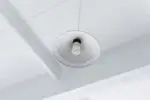
These days, it seems like everyone out there is telling you to be more energy-efficient. However, not a lot of them actually go into depth about why we should do so. A lot of the time, important questions about energy efficiency go unanswered — articles about being energy-efficient often cover a few topics but aren’t very comprehensive. Some of the main questions you might have about energy efficiency may include: Why should we be energy efficient? How can you benefit from energy efficiency? What are the different ways we can be more cost-efficient and energy-efficient? Where’s the evidence that we actually benefit from optimizing or lowering our energy consumption?
We’ve compiled the answers and explanations for several of these questions here. By the end of this article, you will have more facts and data to help you decide whether investing in energy-efficiency is the right move for you.
Why is energy efficiency important?
Before we discuss anything else, it’s important to address why we should be conscious of our energy use and why we should aim to be as energy-efficient as possible. The reasons can range from affecting just your family to affecting everybody on the planet. For example, energy efficiency could be important to you because it helps in saving money.
Let’s say you purchased 50 energy-efficient desktop computers for your office — according to the 2016 Energy Star Annual Report, that purchase could help you save $831 per year. An energy-efficient desktop computer has a lifetime of around four years. You’re hitting two birds with one stone — you’re saving electricity and a total of around $2,753. Even if saving money doesn’t exactly motivate you enough to save energy, there are plenty of other reasons why energy efficiency is important.

Energy efficiency can actually put money in the pockets of several people via the creation of several new jobs within the energy industry. According to the U.S. Senate Committee on Energy & Natural Resources, the energy efficiency industry created 67,000 new jobs in the United States. These new jobs accounted for more than a third of all new energy jobs created within the same period. Thus, the employment that investing in energy efficiency can bring about is pretty significant, and the energy efficiency industry is also projected to keep expanding. According to the 2019 U.S. Energy and Employment Report, energy efficiency employers projected a growth rate of 7.8% for 2019, while firms predicted a 4.6% employment growth for 2019.
Relying on fossil fuels for our energy needs leads to pollution and the release of greenhouse gases. By being energy-efficient, we can lower our reliance on fossil fuels and therefore reduce the production of greenhouse gases and slow or halt the rate of global warming.
The pollution produced from burning fossil fuels affects everyone. According to the World Health Organization, 1.3 billion deaths per year are due to urban air pollution. Saving energy has real, tangible health benefits — it not only prevents deaths, but also prevents triggering of common health conditions.
According to the American Council for an Energy-Efficient Economy, if energy consumption was reduced by 15% in the U.S., 30 million asthma episodes could be prevented annually. Being energy efficient can positively affect millions and it leads to the planet being more habitable in the future. By being more energy-efficient in the present, we will be contributing to a cultural shift towards being more aware of our energy use. We’ll then be better prepared for smarter resource use in the future, as well as ensuring the future availability of affordable and clean energy.
Can energy efficiency save you money?
As we touched on above, energy efficiency can save you up to hundreds of dollars per year or more. Best of all, being energy-efficient doesn’t necessarily have to be expensive or time-consuming. Often, all it takes is a little work and almost no money to start up on energy efficiency savings.
According to Energy Saver, there’s a multitude of ways you can start saving electricity and money. One easy way is turning down your thermostat (from around 23 degrees Celsius to 18C) while you’re out of the house. By doing so, you can save up to 10% annually on your heating bills. That translates to an average of $83 saved per year. Large heating bills are unfortunately a part of cold Canadian winters, so this is a great tip for saving energy in Canada.
Even something as simple as using sleep mode or other power-management features on your computer counts as being more energy-efficient — you could save up to 9% on your annual electricity bill or around $75 per year. That’s $75 you could reinvest into energy-efficient upgrades.
Another free and easy way to save money through energy efficiency is by lowering your water heating temperature. Chances are that your water heater thermostat may be set too high, according to Energy Saver. When your water heater is set at 140 degrees Fahrenheit or 60 C, it can waste between $36 and $61 a year due to standby heat losses. You can minimize these losses by setting your water heater to 120 F or around 49 C. As a bonus, this will also help slow mineral buildup in your water heater so you won’t have to replace your water heater as often or pay for cleaning as often.
One other way you can save money through energy efficiency is through using energy-efficient appliances such as Energy Star-certified appliances. According to Direct Energy, you could save hundreds of dollars over the lifespan of an appliance by using an ENERGY STAR-certified appliances.
For example, an Energy Star-certified clothes washer can save you $40 per year and has a lifespan of around 11 years. Thus, you can expect to save $415 from simply switching to a more energy-efficient clothes washer. Comparable savings are available from switching your other appliances to more energy-efficient ones — you could save $215 over the lifespan of an air purifier or $160 over the lifespan of a clothes dryer.
How much does energy efficiency cost?
Although saving energy can often be free, there’s only so much you can do without investing a little (or a lot) of money into energy efficiency. Regardless of your budget, there are several different energy-efficient upgrades available to help you move towards being more conscious of your energy consumption.
One low-cost, energy-efficient upgrade you can make to your home is switching your light bulbs to more energy-efficient ones such as CFLs or LEDs. Most retailers will have such bulbs available; prices can range from a few dollars per bulb to upwards of $10 per bulb. In return, you will have lightbulbs that can last 15-25 times longer than normal incandescent lightbulbs, according to Energy Saver.
Another relatively low-cost energy efficiency investment you can make is buying charging stations and smart power strips for your home. Often, energy is wasted from electronics being plugged in but not actively being in use. According to Forbes, that could lead to as much as 8% of your home’s power being wasted. On average, charging stations will prevent your cell phones from using extra power once they’re fully charged. Smart power strips can manage several appliances at the same time and prevent extra power from being used when these appliances are not in active use. Cell phone charging stations can cost as little as $10, while smart power strips can cost anywhere from $20 to $100.
Something else you will want to consider is sealing air leaks and adding insulation wherever necessary in your home. Common places to look for air leaks include fireplaces, flooring, windows and doors. According to Energy Saver, the potential energy savings from ridding your home of air leaks can be up to 30%. You can fix air leaks with caulk and spray foam — open-cell spray foam costs around $1-$1.20 per square foot while you can get caulk for as little as $3. According to Living in Canada, a three-bedroom townhouse in Alberta would have a total electricity and gas bill of around $280-$300 per month in cold months. That’s up to $90 per month you could be saving per month from just sealing air leaks.
If you’re not sure where to begin when it comes to energy efficiency, you could elect to get an energy audit. An energy audit determines when, where, why and how energy is being used, according to NRCAN.

Once you know this, you can really pinpoint how to make your home the most energy-efficient it can be. According to Energy Saver, an energy audit could potentially save you 5-30% on your home’s energy bill. On the flip side, once you opt for an energy audit, you won’t have to worry about wasting money on upgrading already energy-efficient processes in your home.
According to an article from Global News, an energy audit could cost between $300 and $500, depending on the size of your home. Getting an energy audit done by a professional can be a little pricier than some other energy efficiency upgrades. However, the energy savings you can earn from making adjustments according to where your energy audit deems them necessary will almost certainly cover the cost of the energy audit, even if it takes some time to do so.
If you have a moderately large budget, you could look into buying new energy-efficient appliances to replace your old appliances, especially if they’re nearing the end of their lifespan. Prices could range between around $50 for an energy-efficient air purifier to over $1,000 for an energy-efficient refrigerator.
It’s important to note that buying energy-efficient appliances doesn’t necessarily mean that you will be paying more. In fact, according to Direct Energy, energy-efficient appliances such as Energy Star-certified ones no longer cost more than their non-energy-efficient counterparts — in some cases, they can actually cost less.
If you choose to invest in new energy-efficient appliances, you might be overwhelmed by the amount of choices available. Fortunately, there’s resources online such as this energy cost calculator from NRCAN that can help you estimate the lifetime energy cost of any new appliances you may be considering.
Calculating energy efficiency payback times: How fast can I get my money back?
You will often hear that energy-efficient upgrades such as energy-efficient light bulbs will pay for themselves in time. But a question that often goes unanswered is how long it will take for you to see the money you invested into an energy-efficient upgrade returned in the form of energy savings.
According to Energy Saver, a CFL bulb can pay for itself in less than nine months via energy savings. In comparison to other energy-efficient upgrades, this is a relatively short amount of time.
For other energy-efficient upgrades, you can calculate how quickly the reduced energy costs of your energy efficiency investments will help you break even for the cost of the investment itself. This calculation is otherwise known as simple payback. To calculate simple payback, all you need to do is divide the initial cost of the energy-saving investment by the estimated annual energy savings that investment will bring. If your maintenance costs are higher due to making the energy efficiency investment, you can subtract that sum from the estimated annual energy savings.
For example, let’s say that you purchase a new energy-efficient refrigerator for $400 after your old one started giving you trouble. Let’s say that the cost savings for switching to the new energy-efficient refrigerator are $40 per year. To calculate the simple payback, we would take the initial cost of the new refrigerator ($400) and divide it by the annual energy savings that the new refrigerator would provide ($40). That would mean that your investment into a new energy-efficient would pay for itself in 10 years.
Something to consider when you’re deciding whether or not to upgrade an appliance to an energy-efficient one is to look at the lifespan of the new appliance. Making sure that your appliance will actually last long enough to achieve simple payback will help you make smart energy-efficient upgrades. Of course, this matters less if you need to purchase a new appliance because your previous appliance no longer works.
How to measure energy efficiency?
Generally speaking, energy efficiency is the amount of useful energy obtained (output energy) divided by the initial energy that was put into a process (energy input). You can get the current energy efficiency of your home evaluated by consulting with an energy advisor for services such as the EnerGuide energy efficiency home evaluation.
Another option is to have an energy audit done; you can either do an energy audit yourself or hire a professional to do so. Tips for doing a home energy audit by yourself include checking your insulation, the type of lighting you use, as well as checking your home for air leaks. You will be able to have an idea of how energy-efficient your house is regardless of if you choose an energy advisor or if you choose to have an energy audit done.
How does insulation improve energy efficiency?
Something that you often hear is that insulation is important for energy efficiency. But how does that work exactly? Insulation reduces heat exchange between the heated living spaces in your home like your living room and bedroom and unheated areas such as your garage or even outside in general.
Most common insulation materials do so via slowing down conductive and convective heat flow. Conductive heat flow is where heat moves between materials that are in physical contact. Convective heat flow is how heat circulates through liquids and gases like the air in your home. Regardless of the type of heat flow, heat will always move from warmer areas to cooler areas until each area has an equal amount of heat.
In order to keep your home comfortably heated, your heating system must replace the heat that’s lost from your living areas. You can help reduce the amount of heat that needs to be replaced by using insulation with high thermal resistance or a high R-value. A higher R-value means more resistance to conductive heat flow.
Something important to note is that different insulation types and materials work best in different places. For example, spray foam insulation would work well around vents and windows, while insulation rolls may work best in places such as your attic.
According to Natural Resources Canada (NRCan), walls can account for about 20% of heat loss in houses. Also, as stated by Green Home Guide, only a few hundred dollars’ worth of insulation can reduce your annual heating and cooling costs up to 30%, depending on your initial investment and the size of your home.
Does turning off the lights save energy?
Sometimes, we’re a little forgetful and we don’t remember to turn off the lights in the living room after we leave it. But does remembering to turn off the lights actually save us energy and money?
According to Energy Star, remembering to turn off just one 60-watt bulb that when you leave the room could save you up to $15 per year.
A rule that we commonly hear is to leave the lights on if you will be out of a room 15 minutes or less. But in truth, that only applies to CFL bulbs. The reason that you should leave CFL bulbs on if you’re leaving the room for less than 15 minutes is that the lifespan of CFL bulbs lessens the more you turn them on and off, according to Energy Saver.
Each time you turn on a CFL light, there’s an inrush of current that’s equal to the amount of current a few seconds of normal light use would use. The electricity savings you would gain from turning off CFL bulbs when leaving a room for less than 15 minutes wouldn’t be worth it due to having to replace your CFL bulbs more frequently.

However, when it comes to other forms of lighting such as incandescent and LED lighting, you should always turn these lights off once you leave the room. The act of turning on and off these lights doesn’t affect their operating life, unlike for CFL bulbs.
So, in summary, if you’re using LED or incandescent lighting, always turn off your lights when you leave the room. If the room you’re in has CFL lighting, only turn off these lights if you’ll be leaving the room for more than 15 minutes. By following these tips, you will be able to save energy by turning off your lights at the appropriate time.
The verdict: Is energy efficiency worth it?
So, in the end, is energy efficiency worth it? The answer is different for everyone — it depends on what’s important to you. Energy efficiency helps us save money, whether it’s by upgrading to new energy-efficient appliances or by changing the light bulbs we use.
The amount of money we save from energy-efficient can be quite significant. Again, you could save hundreds of dollars over a few years by upgrading your appliances. They will pay for themselves via reduced energy costs and also save you money by using less energy than your old, inefficient appliances.
If you need more money in your budget, energy efficiency could help with that. This is especially true when you consider the fact that the U.S. Department of Energy states that the average household could save 25% on their utilities if they were more energy-efficient. That equates to over $2200 per year.
There’s also the climate action matter. If being environmentally friendly is a large concern for you, being more energy-efficient could help address that concern. This means we will be less reliant on fossil fuels and it will ensure that our planet is more habitable in the future.
It’s also essential to know that being energy-efficient doesn’t necessarily mean having to upgrade to appliances with a semi-expensive upfront cost. Simple behavioural changes count as energy-efficient measures, from turning off the lights when you leave a room or opening the curtains during the day in winter.
Although the pros of being energy-efficient can change significantly from one person to another, it’s safe to assume that almost everyone can find at least one reason why energy efficiency is worth it for them, whether it’s affordability, eco-friendliness, social matters, global health concerns or any other specific issues.
Compare energy rates
If you’re looking to lower your energy bills, energy efficiency is only one of the options. For most energy consumers, energy rate comparison will bring you even more savings. At EnergyRates.ca, you can compare electricity and natural gas rates according to your location.
The cost comparison tool enables you to fill in your postal code and check the best available energy deals in your area, whether in Alberta, Manitoba, Ontario, British Columbia or Saskatchewan. Both residential and commercial energy consumers can compare utilities at EnergyRates.ca. It’s 100% free and unbiased.
Business, commercial, large commercial and industrial energy consumers can get a free custom quote based on their energy consumption and energy needs. You will be able to check a list of the main energy providers, their plans and rates in your region.











